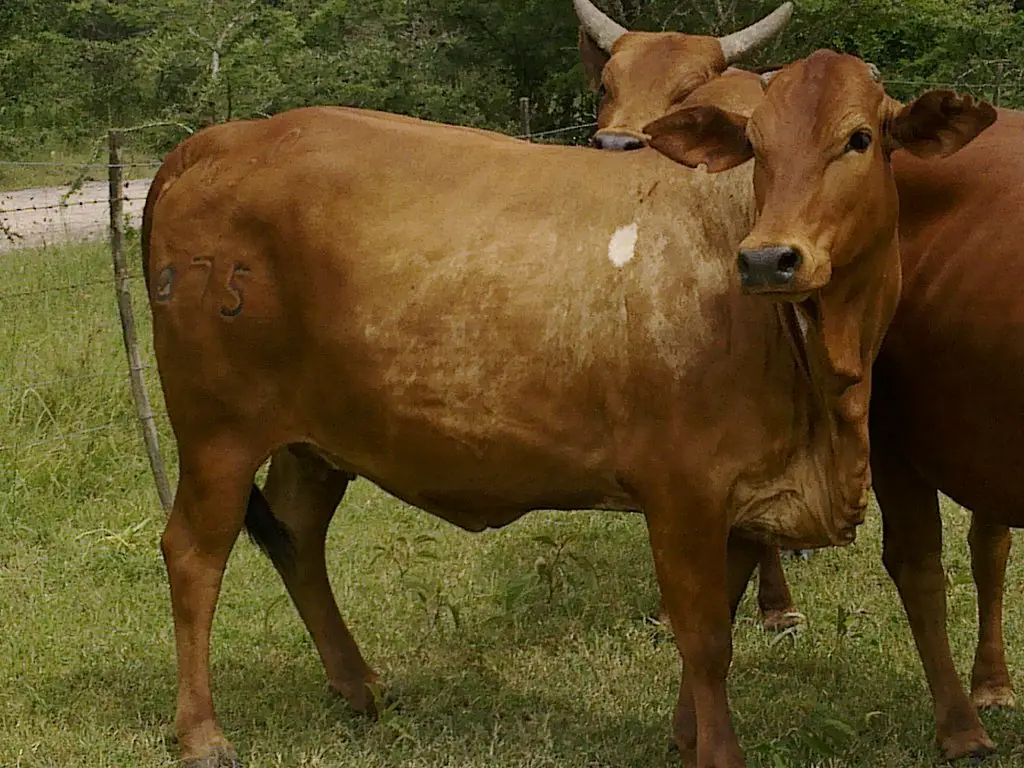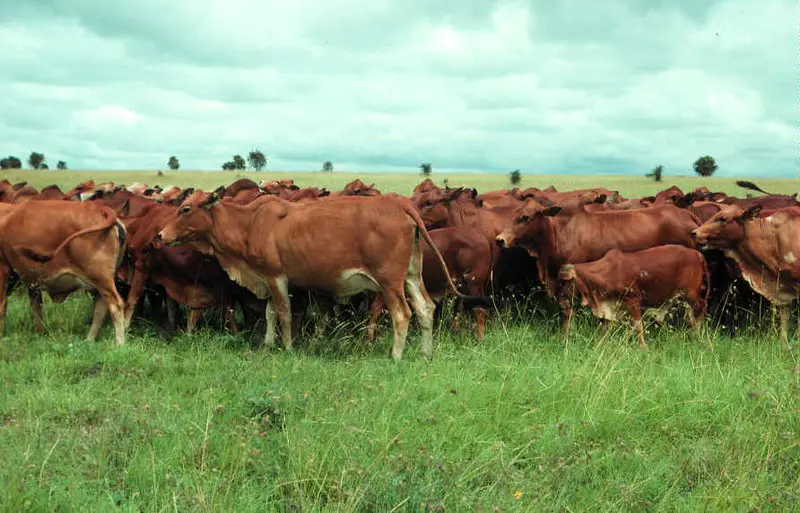
If you’re looking for cattle that can handle tough conditions and still deliver on the bottom line, Boran cattle should be front and center on your radar. These remarkable animals hail from East Africa, where they’ve been honed by centuries of adapting to harsh environments. They’ve steadily gained worldwide popularity thanks to their hardiness, excellent beef quality, and overall ease of management. Let’s dive into everything you need to know about this fascinating breed.
Origin
The Boran breed has a long and rich history. They originated in Kenya and Ethiopia, where they were carefully developed by pastoralist tribes like the Borana Oromo people. These tribes valued cattle that could withstand heat, drought, and limited forage, and the Boran fit the bill perfectly.
Characteristics
Boran cattle are known for their distinctive appearance and impressive adaptations:
- Appearance: Boran are medium-sized cattle with short horns and a pronounced hump on their backs. They typically sport white, gray, or fawn coats, although you’ll sometimes see red or black individuals.
- Temperament: One of the most appealing things about Boran cattle is their docile and easy-going nature. They’re a breeze to handle and manage, even in large herds.
- Resilience: This is where Boran cattle truly shine. They have exceptional heat tolerance, resistance to a variety of diseases, and the ability to thrive on less-than-ideal forage. This translates into healthier animals for you!

Pros
Let’s break down why farmers around the world are choosing Boran cattle:
- Superior Beef Quality: Boran beef is known for its tenderness, marbling, and excellent flavor. This translates to better eating experiences and a premium price on the market.
- High Fertility: Boran cows are highly fertile and have short calving intervals, meaning you have more calves more often, boosting your herd growth.
- Adaptability: Whether you’re dealing with scorching heat, limited grazing, or bouts of disease, Borans will tough it out with minimal impact on their productivity.
- Low Maintenance: Forget fussy breeds! Boran cattle are naturally hardy. Their resilience and foraging ability translate to lower input costs and less stress for you.
Cons
It’s important to be realistic – every breed has trade-offs. Here’s what to consider with Boran cattle:
- Maturity Rate: They may mature slightly slower than some specialized beef breeds, meaning it might take a bit longer for them to reach full market weight.
- Milk Production: Boran are primarily a beef breed. While they’ll produce enough milk for their calves, don’t expect the volumes you’d get from dairy specialized breeds.
Characteristics Table
| Trait | Description |
|---|---|
| Size | Medium-framed. Mature bulls weigh around 1500-1800 lbs (680-820 kg); cows weigh around 1000-1200 lbs. (450-545 kg) |
| Build | Compact, muscular build with well-sprung ribs for good body capacity |
| Head | Short and broad, with a slightly dished profile |
| Horns | Short and thick, curving outward and upward |
| Hump | Pronounced hump, especially in bulls, characteristic of Zebu ancestry |
| Color | Predominantly white, gray, or fawn. Can also be red or black, sometimes with a speckled pattern. |
| Skin | Loose, thick skin with short, glossy hair. Pigmentation offers some protection against sun and insects. |
| Temperament | Docile and easy to manage, ideal for both small and large-scale operations |
| Heat Tolerance | Excellent, able to regulate body temperature effectively in hot climates |
| Disease Resistance | Good resistance to common cattle diseases and parasites like ticks |
| Foraging Ability | Efficient at utilizing less-than-ideal pastures and browse |
| Beef Quality | Excellent meat quality with good marbling, tenderness, and flavor |
| Fertility | High fertility rates, short calving intervals, and strong maternal instincts |
| Maturity Rate | Moderate maturity, reaching market weight slightly later than some specialized beef breeds |
| Milk Production | Moderate milk yields primarily for calf rearing (around 2-5 liters daily under good conditions) |
FAQs
- What is special about Boran cattle? Their resilience and adaptability are truly standout features. They can thrive in places where many other breeds would struggle, all while delivering tasty, high-quality beef.
- What is the difference between Boran and Brahman cattle? Both share Zebu ancestry but Boran cattle are generally smaller, and their history as a pure breed stretches back much further.
- How much milk does a Boran cow produce per day? Boran cows are not primarily dairy cows, but with good nutrition, they can produce around 2-5 liters of milk per day, enough to sustain a healthy calf.
- How much is Boran cattle in Kenya? Prices fluctuate, so it’s best to contact reliable sources like the Boran Cattle Breeders’ Society (https://borankenya.org/) for the most current information.
Conclusion
If you’re looking for a cattle breed that can handle tough conditions, deliver top-notch beef, and won’t break the bank with fussy needs, Boran cattle are worth their weight in gold. Their adaptability allows them to thrive where others might falter. Consider Boran cattle if you’re focused on sustainable and profitable livestock production.
